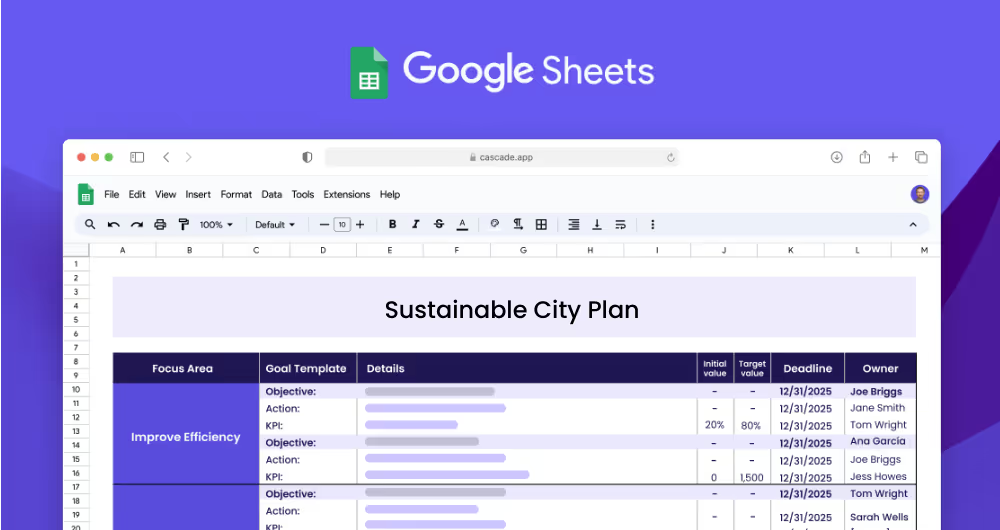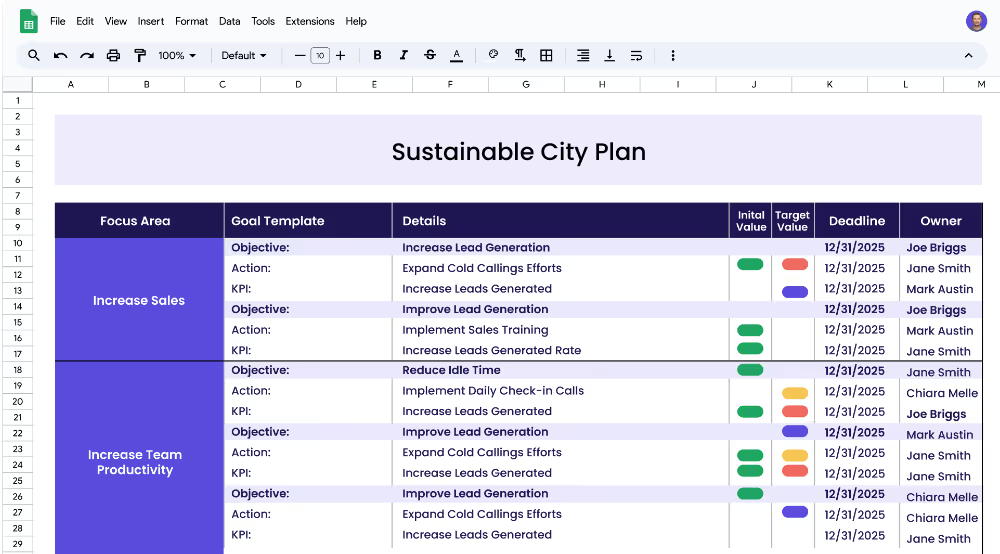A sustainable city plan is a comprehensive strategy for cities, towns, and municipalities to develop their infrastructure, transportation, energy systems, waste management, and community development in an environmentally friendly and socially responsible way. It is an important tool for achieving a sustainable future and is essential for cities to become more resilient and adaptive to the changing world. It is designed to help cities meet their sustainability goals and objectives by ensuring that their actions are aligned with their long-term plans and objectives.
Each focus area has its own objectives, projects, and KPIs to ensure that the strategy is comprehensive and effective.
The Sustainable City Plan template is designed for city planners, urban developers, and municipal governments to establish their sustainable city plans. It is a comprehensive and easy-to-use template for creating a comprehensive sustainable city plan. It provides guidance and structure for outlining objectives, setting measurable targets (KPIs), and implementing related projects to achieve those targets. The template is designed to help cities achieve their sustainability goals in an efficient and effective manner.
The Sustainable City Plan template helps you define and outline your focus areas. A focus area is a broad topic that you can use to group objectives and plan projects. Some examples of focus areas could include sustainable infrastructure, transportation, energy systems, waste management, and community development. You can define your focus areas based on your city's needs and objectives.
An objective is a specific goal that your city wants to achieve within the scope of a focus area. For example, a focus area of sustainable infrastructure could have objectives such as reducing carbon emissions, increasing renewable energy usage, and increasing energy efficiency. Each objective should be measurable and have a specific target and timeline.
KPIs, or Key Performance Indicators, are measurable targets used to track progress toward an objective. For example, an objective to reduce carbon emissions might have KPIs such as increasing renewable energy usage from 10% to 30%, or reducing energy consumption by 10%. Each KPI should have an initial value, target value, and unit of measure.
Projects are the specific actions and initiatives that need to be implemented in order to achieve the KPIs and objectives. For example, to increase renewable energy usage from 10% to 30%, a city might take action such as installing solar panels or increasing renewable energy sources. Each project should have a timeline and budget associated with it.
If you’re ready to speed up the execution of your strategic objectives, Cascade Strategy Execution Software is the ideal step forward. Unlike conventional methods like spreadsheets, Cascade provides a cohesive and intuitive platform where real-time updates, centralized coordination, and automated reporting simplify tracking and executing strategic initiatives. Allowing for greater adaptability to changes and continual alignment across various levels of governance. Sign-up for free or book a demo with our strategy experts and revolutionize your strategic planning and execution today.


